Emotional Intelligence for Leadership
Emotional Intelligence for Leadership Success and Career Advancement
Emotional intelligence in leadership is so invaluable that some MBA and Masters of Organizational Leadership programs have incorporated case studies of emotionally intelligent leaders into their coursework.
Click Here to View Emotional intelligence & leadership presentation,
Click Here to View Keith Miller
Review of Emotional Intelligence
Introduction
Emotional intelligence (EQ) is one of the hottest social-psychological topics at this present time because the accumulative literature spanning over the last twenty-years suggest that EQ has the potential to be a viable component to predicting overall performance. Personnel performance in our new economic platform is more important than ever because competition is at record heights thanks to globalization. The ultimate factor that separates companies from one another is the human component, and having an ability that raises overall performance is an added advantage that no organization can overlook. The high-potential status of EQ is the reason why this study aims to identify the main components of the EQ concept, and to explain the theories that have formed EQ over the past two decades. This study explores the viability of EQ as well as the connection it possesses with cognitive intelligence, personality, academic performance, work performance, and leadership. The eventual research that will post-date this review intends to manipulate EQ in terms of performance in order to experimentally determine EQ’s influence on individual ability.
Emotional Intelligence
The concept of emotional intelligence (EQ) involves emotions playing an important role in our lives, people having different abilities to perceive, understand, use, and manage emotions, and these differences affect our adaptation in a variety of contexts (Cherniss, 2010 p.111). According to Cherniss (2000), the concept of emotional intelligence mainly involves knowing when and how to express emotion more so than it has to do with controlling it. Major theorists in the field of EQ commonly accept EQ’s definition as “the ability to perceive and express emotion, assimilate emotion in thought, understand and reason with emotion, and regulate emotion in the self and others” (Cherniss, 2010; Mayer, Salovey, & Caruso, 2000, p.396).
The theory of emotional intelligence was first articulated by Salovey & Mayer in 1990, in which they detailed the emotional abilities that are needed to improve individual performance. The concept of emotional intelligence was popularized by Daniel Goleman through his bestselling book, Emotional Intelligence in 1995 which claimed that emotional intelligence was a predictor of success at home, work, and in school (Goleman, 1995; Mayer, Roberts, & Barsade, in press). The five components of emotional intelligence at work include self-awareness – being aware of how our behavior is affecting others in a social environment, self-regulation – the ability to regulate moods to conform to adverse situations, motivation – an inner desire to achieve a higher level of performance, empathy – the general willingness to feel compassion, and social skills – which is the ability to interact with various individuals without causing an emotional disruption in others. These five skills that encompass the concept of emotional intelligence can be learned and transferred to the workplace (Goleman, 1998; Zeidner, Matthews, & Roberts, 2009). Additionally, it is believed that the primary focus of emotional intelligence is concerned with reasoning about emotions and using emotions to enhance thought (Mayer, Roberts, & Barsade, 2008, p.511).
There has been much debate concerning the validity of Emotional Intelligence being identified as a form of intelligence. Intelligence is defined as a mental ability that permits recognition, learning, memory, and the capacity to reason about information (Mayer, et al, in press). Emotional intelligence fits this formal meaning of intelligence based on the theory expressed by Salovey & Mayer (1990), because for an individual to express the five traits: self-awareness, self-regulation, motivation, empathy, & social skills – one needs the mental ability to show recognition of emotions, learning of situations that contain emotional stimuli, memory of experiences to regulate behavior, and the capacity to reason about emotionally charged information. Opponents have argued against the validity of EQ because studies have determined validity based on correlational evidence and by using unsound measuring procedures (Antonakis, Ashkanasy, & Dasborough, 2009).
The concentration on multiple intelligences was renewed in the 1980s by Howard Gardener when he proposed that there are other intelligences besides cognitive intelligence such as musical, kinesthetic, interpersonal, and intrapersonal intelligence (Gardener, 1983; Zeidner, et al., 2009). According to Cote & Miners (2006), research has shown that the term emotional intelligence is consistent with definitions of traditional intelligences, and can be conceptualized as the ability to reason correctly with emotional abstractions and to solve emotional problems. Additionally, research has shown that emotional intelligence is correlated with verbal and cognitive intelligence which is a criteria needed to be identified as an intelligence (Cote & Miners, 2006).
Emotional Intelligence and Work Performance
The potential impact of emotional intelligence on performance is immense and this collective belief has spearheaded multifaceted research which has discovered significant relationships between emotional intelligence and performance in numerous areas of concern. According to Greenstein (2001), emotional intelligence was the distinguishing factor that separated the successful American President from the unsuccessful American President. Presidential success was defined as a leader who was able to clearly communicate values, behaviors, and actions to the American society which motivated the country to essentially enhance their overall performance in times of crisis.
This finding suggests that the most important leadership position in the world is impacted by the individual’s ability to use their emotional intelligence, and a higher level of emotional intelligence led to greater overall success. According to the research conducted by Shipley, Jackson, & Segrest (in press), emotional intelligence was positively associated with work experience (full-time work – 40 or more hours compared to part-time work – 39 hours or less), and their study suggest that there are certain sub-factors such as self-control, behavioral dispositions, & self-perceived abilities of emotional intelligence that are related to academic performance (GPA). Additionally, their study showed that age was not positively correlated with emotional intelligence. This finding suggests that emotional intelligence is predictive to an extent by determining a person’s work experience.
According to a meta-analysis of 59 studies conducted by Van Rooy & Viswesvaran (2004), emotional intelligence was found to be correlated positively with job performance. In a study conducted by Cote & Miners (2006), they measured emotional intelligence with the MSCEIT, cognitive ability with the Cattell Culture Fair Intelligence Test (CFIT), and controlled for personality. Their research found that emotional intelligence is a stronger predictor of task performance & organizational citizenship behavior when cognitive intelligence decreases (Cote & Miners, 2006). Lopes, Grewal, Kadis, Gall, & Salovey (2006), suggests that emotional intelligence may contribute to work performance by enhancing relationships and enhance work team effectiveness. Lopes, et al (2006), hypothesized that emotional intelligence is related to indicators of job performance (salary, merit increase, company rank, and ratings of interpersonal facilitation). Lopes et al (2006), found in their research, evidence to suggest that emotional intelligence was related to company rank, merit increase, interpersonal ratings, and personal attitudes which are indicators of work performance.
Emotional Intelligence & Academic Performance
According to Parker, Summerfeldt, Hogan, & Majeski (2004), successful first year students with an 80% or better grade point average (GPA) scored higher in intrapersonal ability, stress management, and adaptability when compared to unsuccessful first year students who scored under 59% on GPA. Marquez, Martin, & Brackett (2006), found that emotional intelligence measured by the MSCEIT in high school students was correlated with academic achievement when cognitive ability and personality was controlled. This study suggests that students with high emotional intelligence tend to display enhanced pro-social behavior and perform better in school (Marquez, et. al, 2006).
According to Parker, Creque, Harris, Majeski, Wood, & Hogan (in press), in a sample size of (n = 667) emotional intelligence was found to be a significant predictor of academic success and EI was measured by the BarOn Emotional Quotient Inventory: Youth Version (EQ-i:YV) which is a self report test. Furthermore, emotional intelligence was strongly associated with interpersonal, adaptability, and stress management abilities (Parker, et. al, in press). Mayer, et. al, (in press), suggests that people with higher emotional intelligence have an ability to spread their control via emotional contagion thus improving others emotional intelligence and are perceived more positively by others. Additionally, when emotional intelligence is validly measured, it is a significant predictor of social relations, work performance, and well-being (Mayer, et. al, in press).
Cherniss (2000) suggests that having the ability to understand what another person is feeling enables one to develop the skill of influence on others which is an important tool for leadership. Barchard (2003) found that measures of emotional intelligence are not as good at predicting academic success as are cognitive ability measures. Studies have shown that the predictive ability of EI decreases when controlling for cognitive intelligence and personality (Mayer, et. al, 2008). Studies seem to indicate that the predictive ability of emotional intelligence is higher for men than for women (Mayer, et. al, 2008). Future research should focus on establishing the predictive ability of emotional intelligence in order to determine the value of using such a measure (Barchard, 2003).
EQ Models
The specific ability model of emotional intelligence focuses on a fundamental trait associated with emotional intelligence such as non-verbal perception which is an ability to decipher social information and recognize emotional expression (Mayer, et. al, 2008). The best measures of specific abilities of emotional intelligence are the Diagnostic Analysis of Nonverbal Accuracy Scales (DANVA & DANVA-2), the Japanese and Caucasian Brief Affect Recognition Test (JACBART), and the Levels of Emotional Awareness Scale (LEAS) (Mayer, et. al, 2008).
The mixed model approach focuses on a broader understanding of the attributes that contribute to emotional intelligence such as adaptability, impulsiveness, creative thinking, intuition, happiness, motivation, and more (Mayer, et. al, 2008). This mixed model approach includes the criteria for the work performance traits of self-awareness, self-regulation, motivation, empathy, and social skills as explained by Daniel Goleman (Zeidner, et. al, 2009).
The basis behind the integrative model of emotional intelligence is to join several specific abilities together to obtain an overall concept of emotional intelligence (Mayer, et. al, 2008). The four branch model of emotional intelligence incorporates accurately perceiving and identifying emotion in oneself and others (branch 1), using emotions to facilitate thought, focus attention, think rationally, logically, and creatively (branch 2), understanding emotion which is identified as an ability to understand emotional information (branch 3), and managing emotion which includes regulating moods and emotions (Mayer & Salovey, 1997; Mayer, et. at, 2008; (Brackett & Salovey, 2006). The best measure of the four branch model of emotional intelligence is the Mayer-Salovey-Caruso Emotional Intelligence Test (MSCEIT) (Mayer, et. al, 2008).
MSCEIT
The MSCEIT is an objective test that was created to measure the four branch model of EQ with 141 items divided into 8 tasks that provide a score for each of the four branches, two area scores, and an overall emotional intelligence score (Brackett & Salovey, 2006). The scoring is calculated by consensus (over 5,000 people) and expert scoring (21 members of the International Society Research on Emotions (ISRE)) (Brackett & Salovey, 2006). The consensus norms and the expert norms correlate at r= .91(Mayer et. al, 2003). The test-retest reliability of the full test MSCEIT over a three week period with a sample of 59 college students was .86 and the split-half reliabilities including 2000 individuals were .93 and .91(Brackett & Mayer, 2003; Mayer, et. al, 2003). These findings suggest that the MSCEIT is both content and structurally valid. The MSCEIT is superior to self-report tests such as the Schutte Self Report Emotional Intelligence Test (SSEIT), because self-report tests correlate highly with measures of well-being and personality and are susceptible to faking (Brackett & Mayer, 2003). Multiple studies have shown that the MSCEIT has expected convergent and discriminant validity (Brackett, Rivers, & Salovey, 2011). Additionally, the MSCEIT has been shown to be statistically independent from other constructs (Brackett, Rivers, & Salovey, 2011). The construct-weakness in the MSCEIT is that it does not test emotional intelligence in real-time which relates the results more closely with crystallized intelligence – involves learning, knowledge, and skills – rather than, fluid intelligence – involves the ability to reason and the ability to understand abstract concepts (Brackett, Rivers, & Salovey, 2011). Furthermore, the MSCEIT has a small range of facial expression and non-verbal questions – which are the primary way humans, communicate information across cultures (O’Sullivan & Ekman, 2004). According to Brackett & Salovey (2006), the relation between emotional intelligence and academic performance is not clearly defined and further research needs to be done.
Emotional Intelligence and Cognitive Intelligence
Cognitive intelligence is the ability to use fluid reasoning, retain and use knowledge, to display quantitative reasoning, to succinctly use visual-spatial abilities, and process working memory efficiently. Previous research has shown that cognitive ability tests (CAT) are the strongest predictors of performance with a mean validity coefficient (shows the strength of the relationship) of .30 according to meta-analytic research (Outtz, 2002). The predictive ability of cognitive intelligence (IQ) has been shown to be predictive of the variance in life success at approximately 20% (Goleman, 1995; Barchard, 2003). In order for emotional intelligence to be a measure of intelligence, the predictive value has to be above and beyond the overlap associated with cognitive intelligence. According to Barchard (2003), the concept of emotional intelligence has to predict individual performance separately from cognitive intelligence in order to be a valid independent intelligence. As noted by Cote & Miners (2006), previous findings suggest that as much as 20 percent of emotional intelligence overlaps with other intelligences including cognitive intelligence which separates 80 percent of EQ from other intelligences and is further evidence that EQ meets the criteria of intelligence.
Emotional Intelligence and Personality
Researchers developed a hierarchy of personality traits that are categorized into a taxonomy called the Five Factor Model (FFM). Additionally, this hierarchal personality model has been developed through extensive research by psychologists such as Guilford, Cattell, Fiske, Tupes, Christal, Digman, Goldberg, Costa, and McCrae (Barrick & Mount, 1991). The Five Factor Model (FFM) consists of five dimensions called: Agreeableness – the ability to be compassionate and cooperative, Conscientiousness – the ability to display self-discipline and aim for higher achievement, Extraversion – the ability to display positive characteristics while in the company of others, and to generally enjoy being in the company of others rather than being alone, Neuroticism – the ability to display negative emotions such as anger and disgust, and Intellect –openness to experience and the ability to express imagination (Goldberg, 1993).
The International Personality Item Pool (IPIP) is a measure of the Big 5 personality inventory, and it was created to enhance the presently slow research in the area of personality (Goldberg, Johnson, Eber, Hogan, Ashton, Cloninger, & Gough, 2005). This personality measure is comparable to the NEO-PI (McCrae & Costa, 1985), which is considered the most robust measure of personality. The IPIP measures the five-factor model of agreeableness, extraversion, neuroticism/emotional stability, conscientiousness, and openness to experience/intellect similarly to the NEO/PI. The IPIP is highly correlated with the NEO-PI on all of the big five personality factors and Chronbach’s alpha is > .85 for all 5 personality factors between the IPIP and the NEO-PI (Goldberg, et. al, 2005; Goldberg, ipip.ori.org/ipip). The measures of the Big five personality inventory include 204 labels for 269 IPIP scales that cover the facet levels of personality as well as the Big 5 and each scale provides the correlation with other well know measures of personality such as the NEO-PI (Goldberg, ipip.ori.org/ipip). EI measured by the MSCEIT has been found to correlate with the Big Five personality traits of Openness, r = .17 to .18, and with Agreeableness, r = .21 to .28, but not significantly related with conscientiousness, neuroticism, and extroversion (Mayer, et al, in press; Mayer, et al, 2008; Brackett & Salovey, 2006).
Emotional Intelligence Conclusion
This review identified the components and theories associated with Emotional Intelligence, and the preceding research has shown promising results that outlined the predictive nature and the importance of the EQ concept. We need to determine what best constitutes emotional intelligence, and seek to implement training methods to enhance this innate ability that can be learned or enhanced. The ability to communicate expertly and effectively hinges on the level of emotional intelligence that we possess. This necessary component of self has been shown in correlational studies to strongly impact our ability to perform in a multitude of situations and areas of great concern. This universal trait is not the sole ingredient in what we define as success, but rather, a major concept that strongly affects the nature of our interactions with the world around us.
Self-regulation, empathy, motivation, social skills, & self-awareness are essential tools that the individual needs to greatly succeed at higher levels of understanding. Our present environmental landscape is dissimilar because of the political, organizational, educational, & fundamental changes that have taken place which requires a different intellectual approach – the emotionally intelligent individual has the ability to interact & communicate effectively in diverse situations which will greatly benefit the individual and prospective situation. These self-abilities of emotional intelligence can be learned and enhanced with an open-minded disciplined approach, and through the assistance of an expert with a deep understanding of the emotional intelligence phenomenon.
©2013, Keith Lawrence Miller, All Rights Reserved.
Barchard, K. A. (2003). Does emotional intelligence assist in the prediction of academic success? Educational and Psychological Measurement, 63, 840-858.
Barrick, M. R., Mount, M. K. (1991). The big five personality dimensions and job performance:a meta-analysis. Personnel Psychology, 44, 1-26.
Brackett, M. A., Rivers, S. E., & Salovey, P. (2011). Emotional intelligence: implications for personal, social, academic, and workplace success. Social and Personality Psychology Compass, 88-103.
Brackett, M. A., Salovey, P. (2006). Measuring emotional intelligence with the mayer-salovery- caruso emotional intelligence test (msceit). Psicothema. 18, 34-41.
Brackett, M. A., & Mayer, J. D. (2003). Convergent, discriminant, and incremental validity of competing measures of emotional intelligence. Personality and Social Psychology Bulletin, 29, 1147-1158.
Cherniss, C. (2010). Emotional intelligence: Toward clarification of a concept. Industrial and Organizational Psychology: Perspectives on Science and Practice, 3, 110-126.
Cherniss, C. (2000). Emotional intelligence: what it is and why it matters. Consortium for Research on Emotional Intelligence in Organizations, 1-14.
Cote, S., Miners, T. H. C. (2006). Emotional intelligence, cognitive intelligence, and job performance. Administrative Science Quarterly, 51, 1-26.
Gardner, H. (1983). Frames of mind: theory of multiple intelligences. New York: Basic Books.
Goldberg, L. R. (1993). The structure of phenotypic personality traits. American Psychologist, 48, 26-34.
Goldberg, L.R., Johnson, J.A., Eber, H.W., Hogan, R., Ashton, M.C., Cloninger, C.R., Gough, H.G. (2005). The international personality item pool and the future of public-domain personality measures. Journal of Research in Personality, 40, 84-96.
Goleman, D. (1998). What makes a leader? Harvard Business Review, 76, 93–102.
Greenstein, F. I. (2001). The presidential difference: leadership style from fdr to Clinton. Princeton, NJ: Princeton University Press.
Lopes, P. N., Grewal, D., Kadis, J., Gall, M., & Salovey, P. (2006). Evidence that emotional intelligence is related to job performance and affect and attitudes at work. Psicothema, 18, 132-138.
Márquez, P. G. O., Martín, R. P., & Brackett, M. A. (2006). Relating emotional intelligence to social competence and academic achievement in high school students. Psicothema, 18, 118-123.
Mayer, J. D., Roberts, R. D., & Barsade, S. G. (in press). Emerging research in emotional intelligence. Annual Review of Psychology, 59.
Mayer, J.D., Salovey, P., & Caruso, D. R. (2000). Models of emotional intelligence. Handbook of intelligence. New York: Cambridge University Press.
Mayer, J. D., Roberts, R. D., & Barsade, S. G. (2008). Human abilities: Emotional intelligence. Annual Review of Psychology, 59, 507-536.
McCrae, R.R., Costa, P.T. Jr., (1985). I updating norman’s “adequate taxonomy”: intelligence and personality dimensions in natural language and in questionnaires. Journal of Personality & Social Psychology, 49, 710-721.
O’Boyle, E. H. Jr., Humphrey, R. H., Pollack, J. M., Hawver, T. H., & Story, P. A. (2010). The relation between emotional intelligence and job performance: a meta-analysis. Journal of Organizational Behavior, Retrieved March 2, 2011
O’Sullivan, M., & Ekman, P. (2004). Facial expression recognition and emotional intelligence. emotional intelligence: common ground and controversy. 89-109, Hauppauge, NY: Nova Science Publishers, Inc.
Outtz, J.L. (2002). The role of cognitive ability tests in employment selection. Human Performance, 15, 161-171.
Salovey, P., Mayer, J. D. (1990). Emotional intelligence. Imagination, Cognition, and Personality, 9, 185-211.
Shipley, N. L., Jackson, M. J., & Segrest, S. L. (in press). The effects of emotional intelligence, age, work experience, and academic performance. Research in Higher Education Journal, 1-18.
Van Rooy, D. L., & Viswesvaran, C. (2004). Emotion intelligence: a meta-analytic investigation of predictive validity and nomological net. Journal of Vocational Behavior, 65, 71-95.
Zeidner, M., Matthews, G., & Roberts, R. D. (2009). What we know about emotional intelligence; how it affects learning, work, relationships and our mental health. MIT Press; Cambridge, MA; London, England.
International Personality Item Pool: A Scientific Collaboratory for the Development of Advanced Measures of Personality Traits and Other Individual Differences (http://ipip.ori.org/). Internet Web Site.
Explanation of Emotional & Social Competencies (ESCI-U)
Background Information
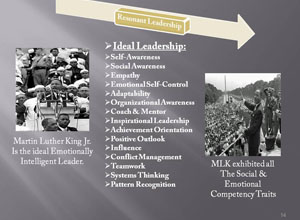

The Emotional and Social Competency Inventory University Edition (ESCI-U) was developed by Richard Boyatzis, Daniel Goleman, and the Hay Group. This assessment measures 12 competencies: (emotional self-awareness, empathy, organizational awareness, achievement orientation, adaptability, emotional self-control, positive outlook, conflict management, coach and mentor, influence, inspirational leadership, and teamwork) separated into four categories: (self-awareness, social awareness, self-management, and relationship management). All of these competencies work in conjunction and have a synergistic effect on overall effectiveness. Additionally, this assessment measures cognitive competencies as defined by systems thinking and pattern recognition. These two competencies have been shown to significantly predict effectiveness in leadership.
Furthermore, the ESCI-U measures the emotional and social competencies in order to form a baseline understanding of where we are in each respective domain in order to implement training practices to improve our abilities in each category to improve effectiveness in work, life, leadership, and in education. The way to improve on these social and emotional dimensions is to become self-aware of where we are situated in relation to these concepts and to aspire to improve our competencies to become more effective at life’s processes.
Emotional Self-Awreness & Achievement Orientation
Emotional self-awareness is the ability to understand one’s own emotional reactions to stimuli and the stemming effects that are caused within our environment. Additionally, emotional self-awareness is about knowing how we operate emotionally, and our capacity to express and control emotions. When someone is high in emotional self-awareness they are conscious of their emotions, why they happen, who the emotions are affecting, and are open to feedback. Achievement orientation involves a need to display excellence and to continually express a strong desire to surpass expectations. An individual with high achievement orientation takes calculated risks that can be measured, thrives on creating acting in a situation, and gets to the heart of the situation in order to take action.
Adaptability
Adaptability is the ability to be flexible throughout changing situations and individuals who display this competency are willing to adjust the focus of their beliefs for increased situational benefits. An individual high in adaptability is able to multi-task, handle change easily, and adapt to new situations as they occur. Emotional self-control is displayed when one can control their behaviors when emotions are high, can deal with highly stressful situations, and remain positive in difficult circumstances. Positive outlook is about having a positive perception of the world at large and understanding that there are opportunities for growth and development. An individual high in this competency envisions a dynamic future that is enlightening and embraces conflict as a sign of improvement.
Empathy & Organizational Awareness
Empathy is about having compassion for other people and understanding another’s point of view. An individual high on empathy can read non-verbal communications, respect others wholly, actively listen, and understand other’s reasoning for taking actions that are against their own beliefs. Organizational awareness is concerned with understanding the hierarchal power dynamic in organizations which include being able to identify decision makers and influencers. One high in organizational awareness displays a keen ability to identify power relationships, has a strong sense of the cultural climate, and concentrates on doing appropriate activities to receive desired rewards.
Conflict Management – Coach & Mentor – Influence
Conflict management is the ability to handle difficult situations and difficult individuals in face to face situations. Individuals high in this competency express an ability to expose disagreements, communicate effectively with all parties involved, focus on a goal everyone can agree upon, and reduces unnecessary tension. The coach and mentor competency involves an individual who can expertly develop others over the long term and spends their time guiding others towards achieving excellence. An individual who scores high in this category knows how to offer appropriate feedback for another’s development, has a presence that encourages others to break down mental barriers, and truly cares about people. Influence involves having a positive impact on others by using persuasion to gain attention. An individual high in this competency gains buy-in for ideas, understands how to speak to other’s self-interest, and knows how to engage important people in discussion.
Inspirational Leadership – Teamwork
Inspirational leadership involves having a desire and appropriate behaviors to lead people by bringing groups together for a shared common purpose. An individual high in this competency is an expert at engaging others in projects, formulating a vision that evokes emotional reactions, and has an ability to motivate people to be the best they can be. The teamwork competency is concerned with the ability to work well with others by sharing responsibility, rewards, and accomplishments. An individual high in this competency thrives in team relationships, invigorates team identity, expresses friendliness, and is respectful of others contributions.
Cognitive Competencies
The cognitive competency of systems thinking involves an ability to identify causes and effects of complex situations. An individual with a high systems thinking competency can explain these complex situations efficiently clear, visualize the causes and effects associated with the situation, and is able to identify the interactional effects in relation to the situational outcomes. The other cognitive competency of pattern recognition is about recognizing and explaining randomness into patterns. An individual high in this competency understands similarities across different patterns and can translate the information into understandable stories for others to interpret the meanings of complex phenomenon.
References
Boyatzis, R., Goleman, D. (2007) Emotional and social competency inventory university edition workbook. Hay Group Transforming Learning
Cherniss, C., Maltbia, T. (2011) Emotional intelligence workshop.Teachers College, Columbia University
©2013 Keith Lawrence Miller, the EliteProCoach, All Rights Reserved.

Click Here to Contact the Elite Pro Coach
The Elite Pro Coach Company is an exclusive provider of Action and Solution-Focused Executive Leadership Coaching & Development, Professional 360 Assessment Coaching, Elite Career Coaching for career advancement and development, Life Coaching for Personal and Professional Development.
Business Services
- We provide Ivy League Resumes, Ivy League Cover Letters, and Incredible Professional LinkedIn profiles to maximize personal and professional branding to achieve success at the next level for entry-level, Mid-Level, and Executive Levels.
- Mock Interviews for professionals and students, Business Consulting for start-ups, Entrepreneurs, and Fortune 500 companies, Emotional Intelligence development for Leadership, and Executive Career Coaching for maximizing leadership competencies in Corporations
- Social Media Marketing for maximizing online presence and developing the meaning of your business in the minds of potential clients
- We support development of targeted positive behaviors and support the elimination of negative processes and behaviors, in which, maximize the potential of your business, your people, and your money.
- Our Purpose: To develop better Leaders, better People, more Career Satisfaction & more Successful Living.
The finest business development consultant providing elite business development consulting and business coaching services which include management coaching, corporate training, career coaching, and executive coaching. Elite Pro Coach Company offers your own personal life coach, leadership coach, and coach training that leads to executive coaching certification endorsed by the Elite Pro Coach Company leading to an accreditation from the International Coach Federation (ICF).

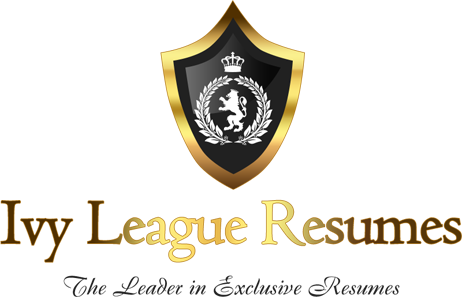









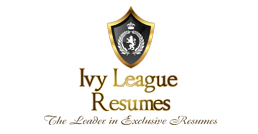



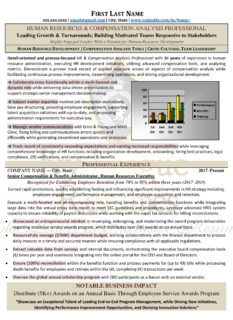



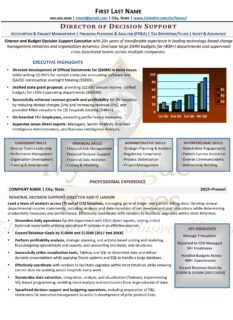





 Keith Lawrence Miller, Organizational Psychologist, Board Certified Coach (BCC), Professional Credentialed Coach (PCC), with subject matter expertise in executive career & leadership coaching and management consulting supported by a Master of Arts (M.A.) in Organizational Psychology from Columbia University.
Keith Lawrence Miller, Organizational Psychologist, Board Certified Coach (BCC), Professional Credentialed Coach (PCC), with subject matter expertise in executive career & leadership coaching and management consulting supported by a Master of Arts (M.A.) in Organizational Psychology from Columbia University.


